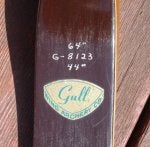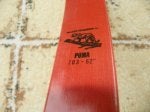My brother and I just got into archery a couple months ago and I've been reading a couple books on it but they don't go especially in depth with string selection for older bows. We ordered some old ones off eBay instead of paying our local archery shops $280 price tag (we are in our 20s and can't really afford that each). As far as I understand I know I would want a dacron string, and out of the box it'll be four inches shorter since its without the tension, the information out there is confusing though because another site said to measure from groove to groove with tension and that is the desired string length after AMO? I don't know, either way my brothers is an old ben pearson 703-62" puma with 50#, mine is an old wing gull 64" with 44#... from groove to groove mine (wing) measures (not following curves/with slight tension) a little over 61" while his (ben pearson) measures exactly 60" -- I would go to our archery store but people told me they would charge for that information, and I would like to really understand and know what to measure and why anyway.
![]()
![]()
![]()
![]()









